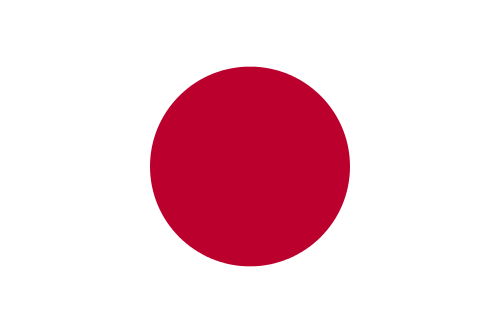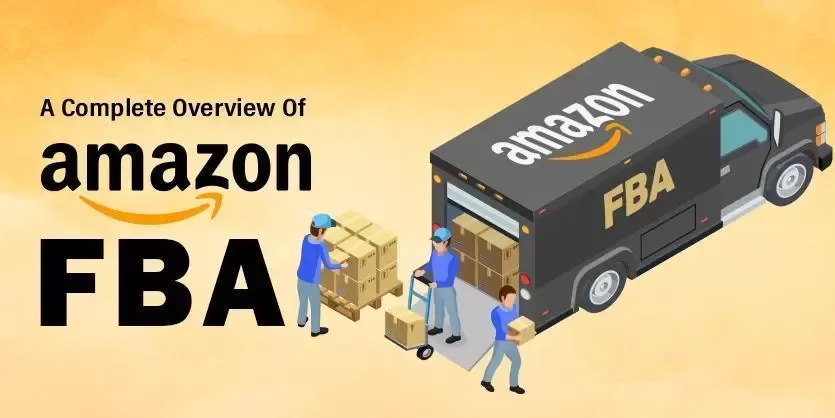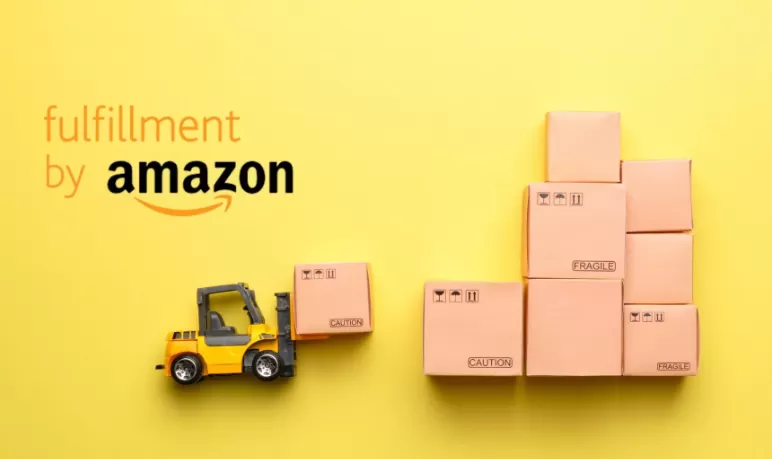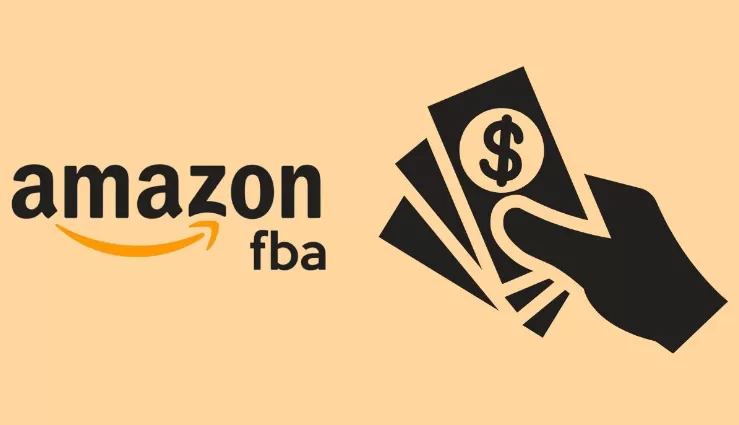If you're sourcing products from overseas and asking,"What does Amazon FBA: Shipping from China to the United States?",you're asking the wrong question.The right question is,"What is my total landed cost,and how do FBA fees impact my final profit?"
As a global seller,your journey involves Shipping from China to the United States,air cargo from Shanghai,How to solve the US Amazon FBA warehousing customs clearance problem in Long Beach,and finally,fulfillment by Amazon.Understanding FBA fees is the critical final piece of your profitability puzzle.This guide isn't just a list of fees;it's a strategic blueprint from a logistics partner that helps you navigate the entire supply chain.By the end,you'll be able to accurately forecast your costs and implement strategies to protect your margins.
Why FBA Fees Make or Break Your International Business
For an international seller,miscalculating FBA fees doesn't just mean a small loss on a sale.It can turn a container-load of products from a profitable venture into a financial disaster.Your pricing must account for the entire journey:product cost,international freight,customs duties,and Amazon's fees.Precise FBA cost forecasting is non-negotiable for determining your import volume,pricing strategy,and ultimately,your business's viability.
The Anatomy of Amazon FBA Fees:A Breakdown for Importers
Here,we dissect every fee,with a special focus on aspects that impact international sellers like you.
1.FBA Fulfillment Fees:The Cost of Final Delivery
This is the fee for picking,packing,and shipping your order to the customer.It's determined by your product's size tier and weight.
Pro Tip for Importers:The dimensions and weight you provide to Amazon are sacred.We often see sellers get hit with unexpected fees because the"shipping"dimensions from their factory in China(which include large cartons)differ from the"product"dimensions Amazon requires(the individual unit in its ready-to-ship form).Always measure your individual units after they have been prepped for FBA according to Amazon's requirements.Incorrect dimensions can push your product into a more expensive tier,eroding your margin on every single sale.
*Table: 2025 FBA Fulfillment Fees (Standard-Size, Non-Apparel) - Examples*
| Size Tier |
Max Weight |
Fulfillment Fee |
| Small Standard |
10 oz |
$3.49 |
| Large Standard |
20 oz |
$4.99 |
| Large Standard |
3 lb |
$6.39 |
2.Monthly Inventory Storage Fees:Your Rent in the FC
You pay this monthly for the cubic space your inventory occupies in Amazon's Fulfillment Centers(FCs).
The Importer's Challenge:This fee makes inventory planning critical.If your sea freight shipment is too large and your inventory sells slower than projected,you'll bleed money in monthly storage fees.If your air freight shipment is too small,you risk stockouts.The goal is a balanced inventory flow that aligns with sales velocity.Rates are higher in Q4(Oct-Dec)due to peak season demand.
3.Long-Term Storage Fees:The Penalty for Poor Planning
This is a harsh penalty for inventory that sits in an FC for more than 271 days.It's calculated per cubic foot,which can be devastating for slow-moving stock.
Logistics Perspective:This fee is a direct result of poor demand forecasting or inefficient supply chain management.If you're shipping by sea,the long transit time(30+days)must be factored into your"271-day clock."A common mistake is ordering a 6-month supply by sea to save on unit shipping cost,only to have sales slow down and get hit with massive long-term storage fees that wipe out any shipping savings.
4.The Hidden Fees That Catch Importers Off Guard
Planned Service Fees:This is a"dumb tax"that is 100%avoidable.If your products arrive at the Amazon FC without proper FBA labeling,poly-bagging,or box prep,Amazon will do it for you at a premium.Solution:Ensure your manufacturer in China or your third-party logistics(3PL)partner,like us,performs these services correctly before your cargo is palletized and shipped.Our fulfillment service includes Amazon-compliant prep,saving you this recurring cost.
Returns Processing Fee:For certain categories,you are charged a fee when a customer returns an item.Factor this into your profitability model for categories like apparel.
Inventory Placement Service Fee:When you send inventory to Amazon,you can choose to send all units to one FC(a small per-item fee)or have Amazon distribute them for you(potentially higher inbound shipping costs).This is a complex decision that depends on your shipment volume and domestic transportation costs.We analyze this for our clients as part of our end-to-end service.
Case Study:Calculating True Profit on a Product Shipped from China
Let's make this real.Imagine you sell a Bluetooth Speaker sourced from China.
Product Cost:$8/unit
Sea Freight Cost(to Amazon FC):$2/unit(consolidated in a shared container)
Customs Duties&Fees:$0.50/unit
Sales Price on Amazon:$39.99
Step 1:Calculate Your Landed Cost at the Amazon FC
Product Cost($8)+Sea Freight($2)+Duties($0.50)=$10.50 Landed Cost
Step 2:Calculate Amazon's Fees
Referral Fee:~15%of$39.99=$6.00
FBA Fulfillment Fee:(Large Standard,1.5 lbs)=$5.68
Estimated Storage Fee:~$0.15/unit(for one month)
Total Amazon Fees:~$11.83
Step 3:Calculate Your Net Profit
Sales Price($39.99)-Landed Cost($10.50)-Amazon Fees($11.83)=$17.66 Net Profit
This exercise highlights a crucial point:Your profit is the small number left after all the big costs are subtracted.A small miscalculation in any area is destructive.
FBA vs.FBM:A Logistics Company's Perspective
FBA(Fulfillment by Amazon)FBM(Fulfilled by Merchant)
| FBA (Fulfillment by Amazon) |
FBM (Fulfilled by Merchant) |
|
| Logistics |
Amazon handles storage, picking, packing, shipping, and returns. |
You (or your 3PL) handle all storage and fulfillment. |
| Costs |
Higher variable fees per order (fulfillment), plus storage. |
Lower variable fees, but you pay for your own warehouse space and staff. |
| Best For |
High-volume, fast-moving goods where Prime eligibility is crucial. |
Large, heavy, or slow-moving items; businesses with existing 3PL partnerships. |
Our Take:For most sellers importing goods,FBA's scalability and Prime access are unbeatable.However,if your products are oversized or you already have a contract with a 3PL for other sales channels,FBM can be more cost-effective.Many of our clients use a hybrid model.
7 Expert Strategies to Slash Your Total FBA Costs
Optimize Packaging at the Source(The#1 Rule):Work with your Chinese manufacturer to design packaging that is minimal and protective.Shaving an inch off a box can move it into a cheaper size tier,saving you$1-2 on every single order.This is the highest ROI action you can take.
Implement Agile Inventory Management:Don't ship a 6-month supply by sea because the per-unit cost is low.Use a mix of sea freight for base inventory and air freight for quick restocks to maintain lean inventory levels and avoid long-term storage fees.
Leverage Amazon Partnered Carrier Program:For your inbound shipping to FCs,Amazon's partnered carriers often offer discounted rates.We can help you compare these rates with our own to ensure you get the best deal.
Maintain a High IPI Score:Your Inventory Performance Index score impacts your storage limits.Sell through old inventory quickly and maintain a healthy sell-through rate to avoid storage restrictions.
Audit Your FBA Fees Relentlessly:Amazon makes mistakes.Regularly check for overcharges on fulfillment or storage fees.Services exist to audit and reclaim these funds for you.
Perfect Your FBA Prep:As emphasized earlier,100%compliance with FBA Amazon FBA Door-to-Door Shipping Costs is mandatory.Use a partner that guarantees this to avoid planned service fees.
Consider a 1PL, 2PL, 3PL, 4PL & Beyond for Hybrid Fulfillment:Some sellers use a 3PL(like us)to receive their full container from China,break down the pallets,inspect goods,apply FBA labels,and then ship smaller batches to multiple Amazon FCs.This provides quality control and can optimize inbound What's the Cheapest Way to Ship from China.
Frequently Asked Questions(FAQ)
Q1:How often does Amazon change its FBA fee structure,and how will I be notified?
A:Amazon typically reviews and adjusts its FBA fees once a year,with changes often announced in December and taking effect in February.However,mid-year adjustments can occur for specific services like storage.You will be notified directly through the Seller Central messaging system,and the announcements are always posted in the seller forums.It's crucial to monitor these communications to adjust your pricing and forecasts proactively.
Q2:Can I use my own shipping method to send goods to Amazon FBA warehouses,or am I forced to use Amazon Partnered Carriers?
A:You have full flexibility.While Amazon Partnered Carriers offer integrated tracking and potential discounts,you are free to use any reliable carrier or How to Pick a Freight Forwarder for Amazon FBA,including us,for your FBA inbound shipments.This is particularly advantageous for international sellers,as a specialized freight forwarder can often provide more competitive rates and handle complex customs clearance more efficiently than a standard parcel carrier.
Q3:What happens if my shipment to the FBA warehouse is lost or damaged in transit?
A:If you use Amazon Partnered Carriers,Amazon's policy may offer some reimbursement.However,if you use your own carrier(like an independent freight forwarder),the responsibility falls on you and your carrier's insurance policy.This is why it's critical to work with The Ultimate Guide to Choosing a Freight Forwarder that provide full insurance coverage for goods in transit,ensuring you are compensated for any loss or damage before the inventory even reaches Amazon.
Q4:Are there any specific labeling or packaging requirements for products shipped from overseas that differ from domestic products?
A:The core FBA labeling requirements(e.g.,FNSKU barcodes)are the same.However,products imported from overseas have additional mandatory labeling governed by customs and consumer safety laws.This includes Country of Origin labeling(e.g.,"Made in China")on each product.Failure to have this marking can result in customs holds,fines,or rejection at the Amazon FC,which is why proper prep by a knowledgeable partner is essential.
Q5:My product is seasonal.How can I strategically time my ocean freight shipments to avoid excessive storage fees during the off-season?
A:This requires advanced supply chain planning.For a Q4 peak season,you should aim for your ocean freight containers to arrive and be checked into FBA warehouses by late August or early September.This minimizes pre-peak storage fees and ensures stock availability.For the off-season,shift to smaller,more frequent shipments via air freight or expedited LCL(Less than Container Load)sea freight to maintain lean inventory levels and avoid long-term storage fees on unsold stock.
Q6:Beyond size and weight,are there any other product characteristics that can increase my FBA fulfillment fees?
A:Yes.Amazon applies surcharges for several product attributes,including:
Hazardous Materials:Products deemed hazardous(e.g.,certain electronics with lithium batteries,aerosols)incur significant additional fees.
High-Performance Handling:Products that are fragile,require special handling,or have a selling price over$150 may be subject to a"High-Performance"fulfillment fee.
Apparel:Clothing items have their own specific fee schedule,which includes an additional per-item"Clothing"prep fee if not pre-tagged.
Q7:Is there a way to estimate FBA fees for a product before I have a finalized sample and exact dimensions?
A:For initial feasibility studies,you can use Amazon's fee charts with your best estimates.However,making final financial decisions based on unverified dimensions is extremely risky.We strongly advise sellers to first obtain a production sample,then measure and weigh the fully packaged product according to Amazon's guidelines before committing to large production runs.A small error in dimension can drastically alter your profit margin.
Q8:How does using a 3PL(Third-Party Logistics provider)in conjunction with FBA work for inventory management?
A:This is called a hybrid model.A 3PL can act as your central receiving hub for all imports from overseas.The 3PL then holds bulk inventory and sends smaller,frequent shipments to FBA warehouses to keep your in-stock levels optimized.This strategy reduces your exposure to Amazon's long-term storage fees and provides a buffer for quick restocking.It also allows you to fulfill orders from other sales channels(like your own website)directly from the 3PL.
Q9:If I sell a product in a multi-pack,how are the FBA fees calculated?
A:When you create a multi-pack(e.g.,a 3-pack of socks),you are responsible for bundling the items into a single,sellable unit.Amazon will then calculate the FBA fulfillment fee based on the dimensions and weight of this new multi-pack unit,not the individual items.It's often more cost-effective than shipping three separate items,but you must ensure the new packaging is still optimized for the smallest possible size tier.
Q10:What is the difference between"Stranded Inventory"and"Unfulfillable Inventory,"and how do they cost me money?
A:Stranded Inventory is sellable inventory that is in an FC but has an inactive listing(e.g.,your listing was suppressed or closed).It accrues monthly storage fees but cannot be sold.Unfulfillable Inventory is inventory that Amazon deems unsellable due to damage or customer returns.It also incurs storage fees until you create a removal order to have it disposed of or returned to you.Both situations silently erode profits and require active management in Seller Central.
Q11:Are there any tools or software that can help me monitor and analyze my FBA fees at scale?
A:Absolutely.While Seller Central provides basic reports,dedicated software like Helium 10,Jungle Scout,or SellerBoard offers more powerful analytics.These tools can track your profit margins per SKU,alert you to fee changes,flag potentially incorrect charges,and help you identify which products are most profitable after accounting for all costs,including advertising.
Q12:If I want to test selling a new product with minimal risk,what is the most cost-effective way to send initial inventory to FBA?
A:For a product test,avoid large sea freight shipments.The best strategy is to air freight a small quantity(enough for 1-2 months of projected sales)directly to FBA.While the per-unit air freight cost is higher,you minimize your capital risk and avoid potential long-term storage fees if the product fails to sell.Once the product proves successful,you can then transition to more cost-effective ocean freight for larger replenishment shipments.
Conclusion: Master Your Costs, Master Your Global Business
Understanding Amazon FBA fees is not an academic exercise;it's a fundamental requirement for profitability in international e-commerce.By treating your supply chain as a single,integrated system—from your factory floor to the customer's doorstep—you can make informed decisions that protect your margins.
At[Your Logistics Company Name],we go beyond shipping containers.We partner with you to optimize your total landed cost,ensuring your journey from China to the Amazon FC is as efficient and profitable as possible.
Your Next Step:Choose a product and perform the detailed profit calculation we outlined above.If you need help optimizing your international shipping to align with your FBA strategy,[contact our experts today]for a personalized consultation.

 EN
EN
 FR
FR
 ES
ES
 JA
JA
 PT
PT
 RU
RU
 AR
AR







